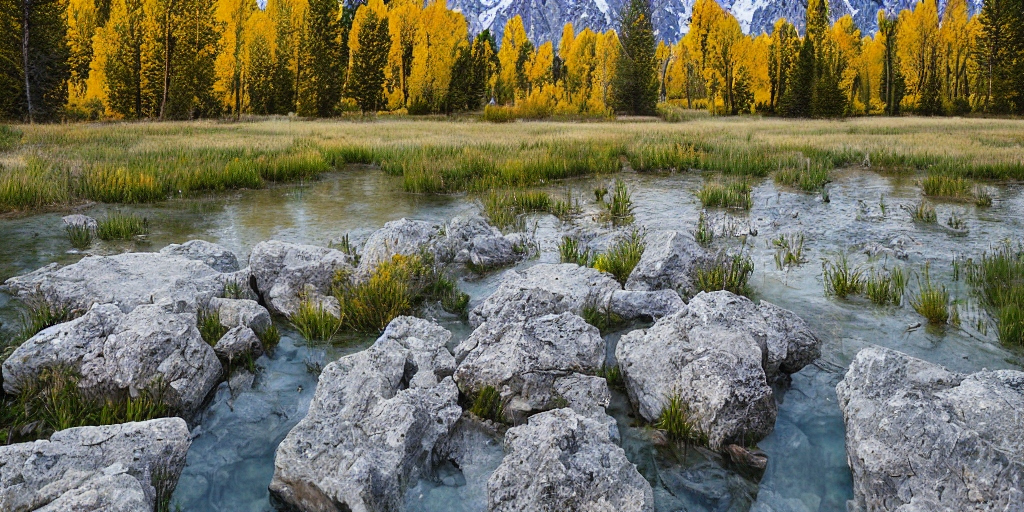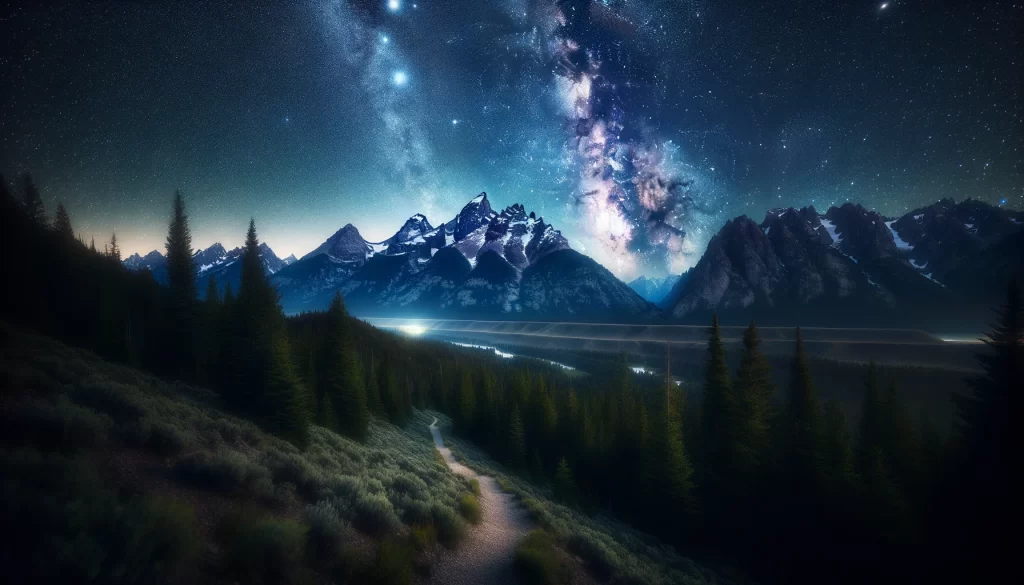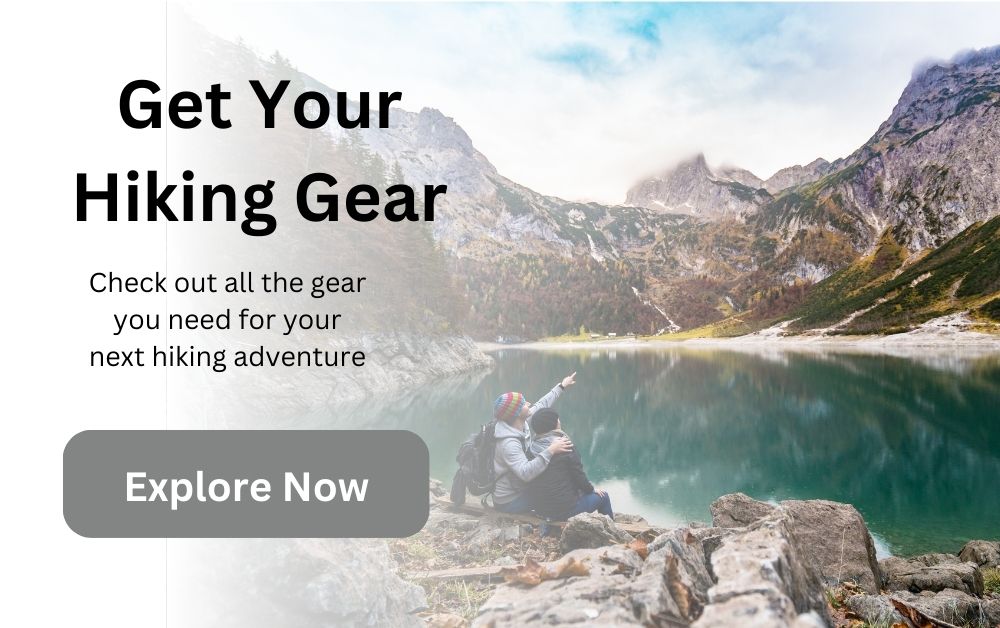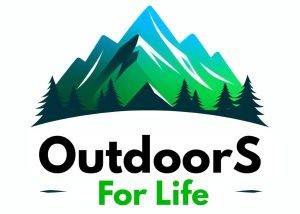Grand Teton National Park Teton Crest Trail

Welcome, Trailblazers!
Nestling in the grandeur of Wyoming’s Grand Teton National Park, the Teton Crest Trail is more than a hike; it’s a pilgrimage through the very soul of the mountains. Spanning about 40 miles of rugged backcountry, it offers seasoned hikers an exhilarating challenge coupled with awe-inspiring beauty. Let’s delve into what makes this trail a must-do and how you can prepare for the journey of a lifetime.
Key Takeaways
- Difficulty Level: Intermediate to Advanced. The trail’s challenging terrain, significant elevation gains, and high altitude demand good physical condition and some hiking experience.
- Distance: Approximately 40 miles (64 kilometers). The actual distance can vary slightly depending on the specific route and trailheads chosen.
- Elevation: Elevation gain exceeds 8,000 feet (2,400 meters) cumulatively across the trail, with certain sections reaching altitudes over 10,000 feet (3,048 meters) above sea level. This contributes to the trail’s difficulty and the need for acclimatization.
- Time to Complete: Typically 3 to 5 days. The exact time can vary based on individual pace, the amount of time spent at scenic overlooks and campsites, weather conditions, and overall hiking experience.
Overview of the Teton Crest Trail
The Teton Crest Trail is a breathtaking 40-mile trek that showcases the stunning beauty of Grand Teton National Park in Wyoming. Offering hikers jaw-dropping mountain views, alpine meadows dotted with wildflowers, crystal-clear lakes, and diverse wildlife, this trail is a paradise for outdoor enthusiasts. With elevations ranging from 6,700 feet to over 10,700 feet, be prepared for challenging climbs and rewarding descents that will test your hiking prowess.
As you traverse the Teton Crest Trail, you’ll pass through a variety of landscapes, from lush forests to rugged mountain passes. Keep an eye out for iconic sights such as the towering Grand Teton peak, breathtaking alpine vistas, and picturesque glacial valleys. Whether you’re an experienced backpacker looking for a new adventure or a nature lover seeking a taste of the great outdoors, the Teton Crest Trail promises an unforgettable journey through some of the most awe-inspiring terrain in the American West.
Best Time to Hike the Teton Crest Trail
When considering the best time to tackle the Teton Crest Trail, it’s crucial to keep in mind the ever-changing weather conditions in the region. The trail typically opens up around July as the snow melts away, allowing hikers to enjoy clearer paths and stunning vistas. But remember, this prime season also brings larger crowds and the need to secure permits in advance. If you prefer a quieter trek with fewer people, September after Labor Day can be an excellent alternative.
Late summer into early fall can treat you with cooler temperatures and breathtaking fall foliage, making your journey even more memorable. However, be prepared for a mix of sunny days and possible early snowfall. Always check weather forecasts, pack accordingly, and stay flexible to adapt to any sudden changes Mother Nature throws your way.
Trail Difficulty and Terrain
What makes the Teton Crest Trail unique is its mix of challenging terrain and awe-inspiring beauty. With elevations reaching above 10,000 feet and steep inclines along the way, hikers should be prepared for a strenuous trek. The trail is rocky in parts, with some sections requiring scrambling over boulders and navigating through tight switchbacks. Novice hikers may find some segments to be particularly demanding, so it’s essential to pace yourself and take breaks when needed.
The trail’s terrain varies from alpine meadows to dense forests, offering a diverse hiking experience for outdoor enthusiasts. Trekking through wildflower-filled fields and crossing crystal-clear streams adds to the trail’s allure. Be ready for muddy sections, especially after rain, and have appropriate footwear to navigate through these slippery areas. Keep an eye out for rocky outcrops and loose gravel, as they can make certain sections trickier to traverse. With proper preparation and the right mindset, conquering the Teton Crest Trail will be a rewarding adventure.
Wildlife Encounters on the Teton Crest Trail
The Teton Crest Trail is a haven for wildlife enthusiasts, offering glimpses of moose, elk, marmots, and the occasional black bear or mountain lion. Remember to keep a safe distance and never approach or feed any wildlife you encounter. It’s all about coexisting harmoniously with these beautiful creatures in their natural habitat. So, be sure to have your camera ready for those memorable wildlife sightings along the trail!
Camping Options along the Trail

If you’re planning to hike the Teton Crest Trail, you’ll have plenty of camping options along the way. From established campgrounds to backcountry spots, you can choose where to pitch your tent based on your preferences and daily mileage. Some popular campgrounds include Marion Lake, Sunset Lake, and North Fork Cascade Canyon, offering breathtaking views and a chance to rest after a long day on the trail.
For those seeking a more secluded experience, backcountry camping spots like Alaska Basin and Death Canyon Shelf provide a peaceful retreat surrounded by nature. Remember to follow Leave No Trace principles and always pack out what you pack in to help preserve the beauty of the trail for future hikers. Whether you prefer a designated campground or a remote backcountry site, camping along the Teton Crest Trail offers unforgettable moments under the stars.
Water Sources and Filtration Tips
When hiking the Teton Crest Trail, ensuring access to clean water is crucial for staying hydrated and healthy. There are several natural water sources along the trail, such as creeks, rivers, and lakes, where hikers can refill their water bottles. It’s important to always carry a reliable water filtration system to purify the water before drinking to prevent any potential waterborne illnesses. Be sure to check the condition of your water filter before embarking on the trail to avoid any surprises.
Additionally, it’s advisable to plan your water refills strategically to avoid running out of water in between sources. Some sections of the trail may have longer distances between water sources, so it’s wise to top off your water supply whenever the opportunity arises. Remember to stay mindful of Leave No Trace principles and always respect the natural environment by avoiding contaminating water sources with soaps or other pollutants. By being prepared and staying vigilant about water filtration, you can enjoy a safe and refreshing hiking experience on the Teton Crest Trail.
Permits and Regulations for the Trail
If you’re thinking about tackling the incredible Teton Crest Trail, make sure you’ve got your permits sorted out. It’s important to snag a permit for your trek through Grand Teton National Park, especially if you plan on camping overnight. The park has a quota system to manage the number of hikers and campers on the trail, so booking your permit in advance is key to securing your spot. Keep in mind that permits are required year-round for all overnight stays in the backcountry.
And when it comes to following regulations along the trail, it’s pretty straightforward – just be respectful of the environment and wildlife. Stay on designated trails to help preserve fragile ecosystems and avoid trampling vegetation. Remember to pack out all trash and waste to keep the trail clean for future hikers. Oh, and one more thing – campfires are not allowed above 7,200 feet, so be sure to bring a camping stove for cooking. Following these rules will ensure a smooth and enjoyable adventure on the Teton Crest Trail.
Trail Etiquette and Leave No Trace Principles
When hiking the Teton Crest Trail, always remember to respect fellow hikers by yielding to those going uphill and keeping noise levels to a minimum to preserve the tranquility of the environment. Additionally, make sure to stay on designated trails to protect fragile vegetation and prevent erosion. Following these simple etiquette rules ensures an enjoyable experience for everyone on the trail.
As you venture along the Teton Crest Trail, embrace the Leave No Trace principles by properly disposing of waste, packing out all trash, and leaving natural objects untouched for others to enjoy. Remember to camp at designated sites to minimize your impact on the surrounding wilderness and wildlife. By following these guidelines, you help preserve the beauty of the Teton Crest Trail for future generations of hikers to enjoy.
Gear and Packing List for the Teton Crest Trail

When gearing up for the Teton Crest Trail, make sure to pack the essentials to ensure a comfortable and safe hiking experience. Some must-have items include a sturdy backpack, lightweight but durable tent, warm sleeping bag, and a reliable water filtration system. Don’t forget to bring layers of clothing for changing weather conditions, sturdy hiking boots, a compact stove for cooking meals, and a first aid kit for emergencies.
Additionally, pack plenty of high-energy snacks, such as trail mix and energy bars, to keep you fueled throughout your trek. A map and compass (or GPS device) are crucial for navigating the trail, along with a headlamp for nighttime visibility. Lastly, don’t leave without sunscreen, insect repellent, and a portable charger for your electronic devices. By packing smart and light, you’ll be ready to take on the Teton Crest Trail with confidence and ease.
Resupply Points and Food Storage
For those planning a multi-day hike on the Teton Crest Trail, strategic resupply points can make your journey much more enjoyable. Jackson, Wyoming, is a popular spot to restock on food and other essentials during your trek. With its selection of outdoor stores and grocery options, you can easily refuel before heading back into the wilderness. Additionally, the town offers a chance to grab a hot meal and enjoy a cozy night’s sleep in a comfy bed before hitting the trail again.
When it comes to food storage on the Teton Crest Trail, remember to securely store all your supplies to prevent any unwanted encounters with wildlife. Bears are known to roam the area, so it is crucial to use bear-proof containers or hang your food in designated bear bags away from your campsite. Keeping a clean camp and properly storing your food not only protects the wildlife but also ensures a safe and hassle-free experience for you and your fellow hikers.
Weather and Safety Considerations
Always be prepared for changing weather conditions along the Teton Crest Trail. The high elevation means you can experience sudden temperature drops, even in the summer months. Be sure to layer your clothing so you can adjust to the changes throughout the day. Thunderstorms are common, so keep an eye on the sky and seek shelter if necessary. Waterproof gear is a lifesaver if you get caught in a downpour, which happens quite frequently in the mountains.
Safety is a top priority on any hiking trip. The Teton Crest Trail is remote, so it’s essential to stay aware of your surroundings. Hike with a buddy if possible and let someone know your itinerary before you head out. Carry a map, compass, or GPS device, and know how to use them. In case of an emergency, have a well-stocked first aid kit on hand. And always remember to pack out all your trash to help preserve this beautiful wilderness for future generations.
Transportation and Parking for the Trail
For those planning to hike the Teton Crest Trail, figuring out transportation and parking can be a bit of an adventure in itself. The trail has multiple access points, with the most popular starting point being at the Granite Canyon Trailhead. This spot tends to fill up quickly, especially during peak hiking seasons, so arriving early in the day is a solid strategy to snag a parking spot. If the lot is full, not to worry – there are additional parking areas nearby that offer shuttle services to the trailhead, making logistics a breeze.
With limited parking availability at some trailheads, carpooling with fellow hikers can be a handy solution to reduce the number of vehicles on the road and increase the likelihood of finding a parking spot. Many trailheads also have designated overnight parking areas, which is convenient for thru-hikers or those embarking on multi-day treks. Checking out the latest information on shuttle services and parking regulations before hitting the road can help smooth out any potential transportation hiccups and ensure a stress-free start to your Teton Crest Trail adventure.
Popular Side Trails and Points of Interest
If you’re looking to add some extra adventure to your Teton Crest Trail experience, be sure to check out the Bradley and Taggart Lakes Trail. This side trail offers stunning views of the surrounding mountains and lush meadows, making it a perfect spot for a picnic or a leisurely stroll. Keep an eye out for wildlife such as moose and elk that frequent the area, adding to the allure of this picturesque hike.
Another popular side trail worth exploring is the Cascade Canyon Trail. As you wind your way through the towering pine trees and along the cascading creek, you’ll be treated to jaw-dropping views of the Grand Teton mountain range. This trail is a favorite among hikers for its diverse scenery and the chance to spot a variety of birds and other wildlife. Whether you’re seeking a challenging trek or a more relaxed hike, the Cascade Canyon Trail offers something for everyone.
Personal Experiences and Recommendations
Embarking on the Teton Crest Trail was like stepping into a nature-lover’s paradise. The dramatic mountain views, lush meadows, and crystal-clear alpine lakes left me in awe at every turn. One of my favorite memories was waking up early to catch the sunrise over the Grand Tetons – a picture-perfect moment that made every mile of the hike worth it.
When it comes to recommendations, I suggest packing light but not skimping on the essentials. A good pair of hiking boots, a sturdy tent, and a reliable water filtration system are must-haves for this trail. Also, don’t forget to bring a camera to capture the breathtaking scenery along the way. And most importantly, take your time to soak in the beauty of the Tetons – it’s not just a hike, it’s an unforgettable experience.
Resources for Planning Your Teton Crest Trail Adventure
Need some help planning your Teton Crest Trail adventure? Look no further than the official Grand Teton National Park website. It’s jam-packed with info on permits, current trail conditions, and any alerts you need to know before you hit the trail. Another great resource is the park’s ranger station – swing by for insider tips on the best campsites and wildlife hotspots.
Social media can also be your best friend when prepping for the Teton Crest Trail. Join online communities like Reddit’s hiking threads or Facebook groups dedicated to backpacking in the region. You’ll find firsthand accounts from folks who’ve recently tackled the trail, plus real-time updates on weather and any unexpected surprises you might encounter along the way.
FAQ’s
What is the best time to hike the Teton Crest Trail?
The best time to hike the Teton Crest Trail is typically from mid-July to early September when the snow has melted and the weather is more predictable.
Are there any resupply points along the Teton Crest Trail?
Yes, there are a few resupply points along the Teton Crest Trail where you can restock on food and supplies. Be sure to plan ahead and check for availability.
Do I need a permit to hike the Teton Crest Trail?
Yes, you will need a permit to hike the Teton Crest Trail. Make sure to obtain the necessary permits in advance to ensure a smooth trip.
What wildlife encounters should I be prepared for on the Teton Crest Trail?
You may encounter wildlife such as bears, moose, and deer along the Teton Crest Trail. Be sure to follow proper safety precautions and store food properly to avoid any unwanted encounters.
What is the trail difficulty and terrain like on the Teton Crest Trail?
The Teton Crest Trail is known for its rugged terrain and varying difficulty levels. Be prepared for steep climbs, rocky terrain, and potentially challenging conditions.
Can I camp along the Teton Crest Trail?
Yes, there are camping options along the Teton Crest Trail. Be sure to follow Leave No Trace principles and check for any restrictions on camping in certain areas.
What water sources are available along the Teton Crest Trail?
There are water sources along the Teton Crest Trail, but it is recommended to filter or treat any water before drinking to avoid waterborne illnesses.
What should I pack for my Teton Crest Trail adventure?
Be sure to pack essential gear such as a tent, sleeping bag, stove, food, water, and appropriate clothing for changing weather conditions. Check the gear and packing list for more details.
Are there any popular side trails or points of interest along the Teton Crest Trail?
Yes, there are popular side trails and points of interest along the Teton Crest Trail, including stunning viewpoints, alpine lakes, and unique geological features. Be sure to explore these areas if you have the time.
How should I prepare for the weather and safety considerations on the Teton Crest Trail?
Be prepared for changing weather conditions, including potential thunderstorms and colder temperatures at higher elevations. Make sure to pack appropriately and have a plan in case of emergencies.
I hope this detailed guide equips you with everything you need to know for an unforgettable journey on the Teton Crest Trail. Happy hiking!
